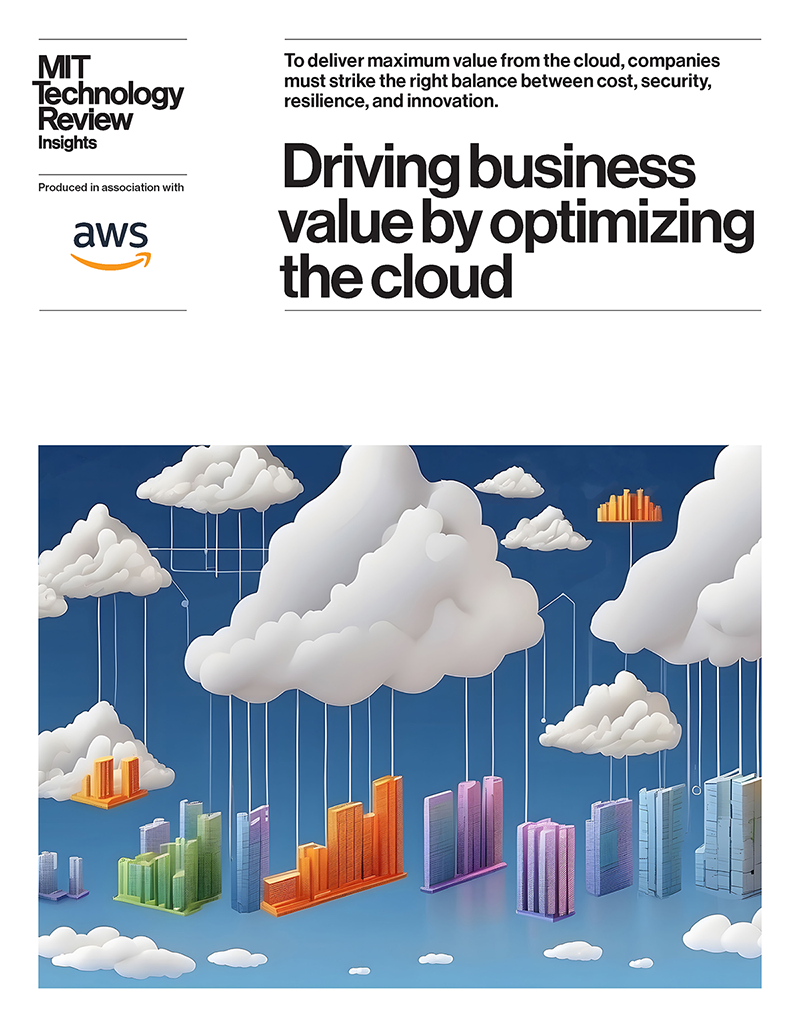Sponsored
Driving business value by optimizing the cloud
To deliver maximum value from the cloud, companies must strike the right balance between cost, security, resilience, and innovation.
In association withAWS
Organizations are deepening their cloud investments at an unprecedented pace, recognizing its fundamental role in driving business agility and innovation. Synergy Research Group reports that companies spent $84 billion worldwide on cloud infrastructure services in the third quarter of 2024, a 23% rise over the third quarter of 2023 and the fourth consecutive quarter in which the year-on-year growth rate has increased.

Allowing users to access IT systems from anywhere in the world, cloud services also ensure solutions remain highly configurable and automated.
At the same time, hosted services like generative AI and tailored industry solutions can help companies quickly launch applications and grow the business. To get the most out of these services, companies are turning to cloud optimization—the process of selecting and allocating cloud resources to reduce costs while maximizing performance.
But despite all the interest in the cloud, many workloads remain stranded on-premises, and many more are not optimized for efficiency and growth, greatly limiting the forward momentum. Companies are missing out on a virtuous cycle of mutually reinforcing results that comes from even more efficient use of the cloud.
Organizations can enhance security, make critical workloads more resilient, protect the customer experience, boost revenues, and generate cost savings. These benefits can fuel growth and avert expenses, generating capital that can be invested in innovation.
“Cloud optimization involves making sure that your cloud spending is efficient so you’re not spending wastefully,” says André Dufour, Director and General Manager for AWS Cloud Optimization at Amazon Web Services. “But you can’t think of it only as cost savings at the expense of other things. Dollars freed up through optimization can be redirected to fund net new innovations, like generative AI.”
This content was produced by Insights, the custom content arm of MIT Technology Review. It was not written by MIT Technology Review’s editorial staff.
This content was researched, designed, and written entirely by human writers, editors, analysts, and illustrators. This includes the writing of surveys and collection of data for surveys. AI tools that may have been used were limited to secondary production processes that passed thorough human review.
Keep Reading
Most Popular
We did the math on AI’s energy footprint. Here’s the story you haven’t heard.
The emissions from individual AI text, image, and video queries seem small—until you add up what the industry isn’t tracking and consider where it’s heading next.
We’re learning more about what weight-loss drugs do to the body
GLP-1 agonists like Wegovy, Ozempic, and Mounjaro might benefit heart and brain health—but research suggests they might also cause pregnancy complications and harm some users.
This giant microwave may change the future of war
The defense tech startup Epirus has developed a cutting-edge, cost-efficient drone zapper that’s sparking the interest of the US military. Now the company has to deliver.
How a new type of AI is helping police skirt facial recognition bans
Adoption of the tech has civil liberties advocates alarmed, especially as the government vows to expand surveillance of protesters and students.
Stay connected
Get the latest updates from
MIT Technology Review
Discover special offers, top stories, upcoming events, and more.